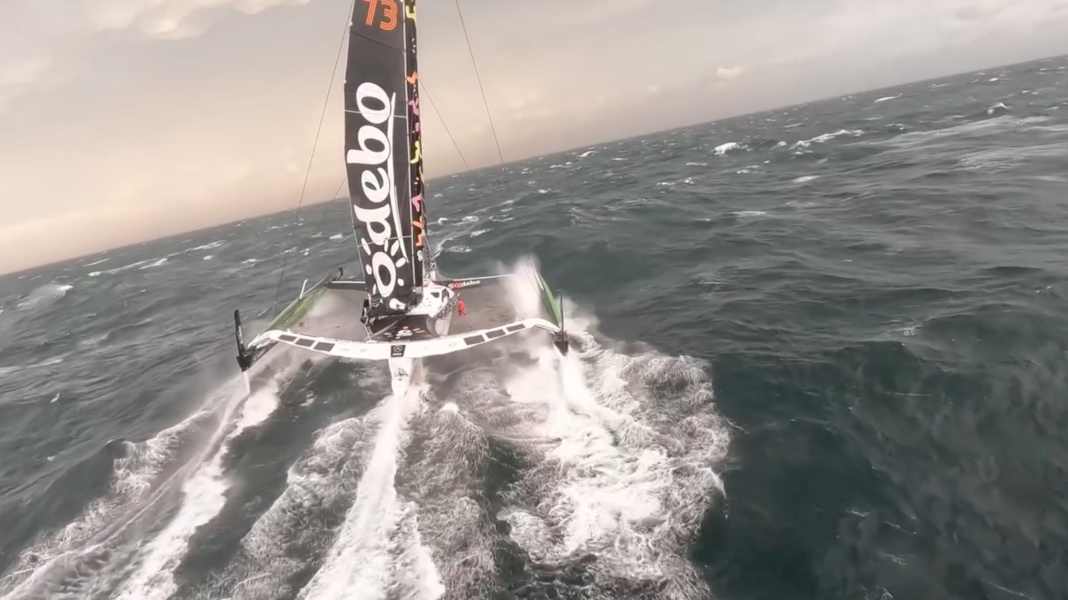
The crew led by skipper Thomas Coville knew that the Indian Ocean would not be easy: Francis Joyon had travelled extremely fast there with his "Idec Soport" during his Jules Verne record from 2017 (40 days, 23 hours, 30 minutes and 30 seconds).HE had encountered an almost ideal weather window for the passage back then and had also set a distance record there. That's why it was so important that the current record chasers around skipper Coville had a head start in the passage of the Cape of Good Hope the day before yesterday. Which they did impressively with a lead of over a day and four hours.
Now the crew has sent a spectacular drone video from on board, showing how the cat foils its way through the rough seas and in one sequence accelerates extremely in a gust so that the aircraft can barely keep up. It looks spectacular, but is unfortunately slower than hoped: the lead has currently shrunk from over 300 miles to 277. While "Sodebo Ultim" has been travelling at around 25 knots for the last four hours, the record set by Francis Joyon and his crew was almost 36 knots. But they also had smoother water and didn't have to worry about falling off the fouls and getting stuck in one of the waves. That's the crux of the foiler: in rough seas and high winds, the risks and loads quickly become much higher than with a classic trimaran like "Idec Sport".
Meanwhile, as can be read in the team chat, the strategy for the passage of the Kerguelen Islands is being discussed on board. The crew is expecting gusts of up to 40 knots to the west of the archipelago over the next few hours and wants to avoid the strongest ones to the north if possible. The crew suggested contacting some fishing boats travelling near the islands to see if they had seen any ice in their area. In contrast to the Vendée Globe, outside assistance and routing are permitted in a Jules Verne record attempt. In the end, they decided to jibe further south, probably because the closer passage means more wind.
